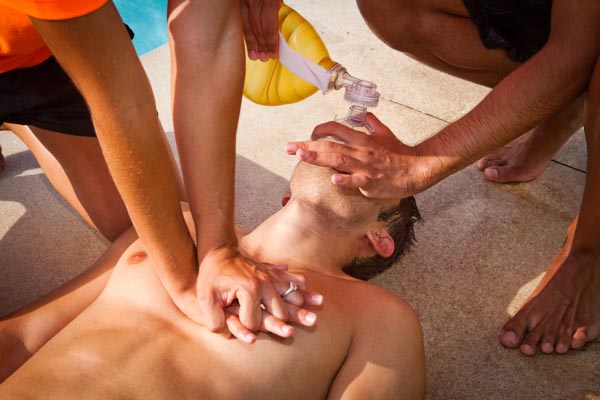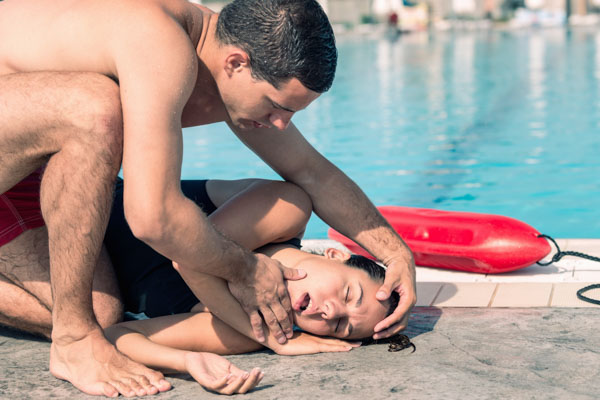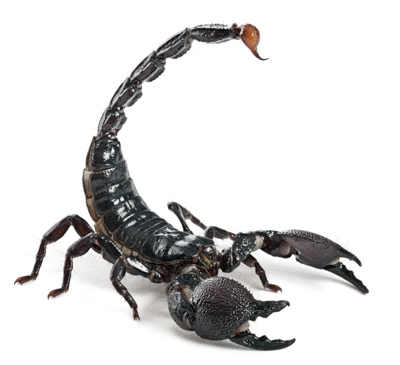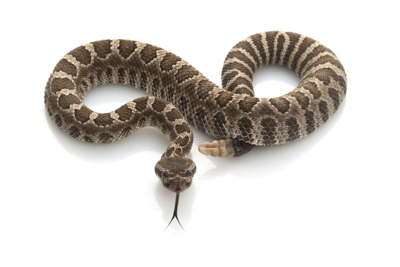CPR #3
Online Course Samples
Sample #1
CPR Compression Techniques
- To perform compressions, position yourself at the patient’s side.
- Place the heel of one hand on the sternum in the center of the chest between the nipple line.
- Place your other hand on top of the other, interlocking your fingers.
- Slightly pull your fingers back so that only the heel of your hand is on the patient’s chest.
- Lean over the patient so that your shoulders are directly over your hands and lock your elbows.
- Begin by pushing straight down onto the chest hard and fast. Press down approximately at least two inches (5 cm).
- Lift up, bringing your weight completely off the chest but keeping the hands in place. Let the chest completely rise.
- Continue to do this at a rate of 100 per minute.

It is important to ensure that your compressions are hard and fast. With each compression you are building pressure inside the chest to help push blood to vital organs. Compressions that are too shallow or too slow do not build the necessary pressure and will not improve the chance of survival. It is also important to release the pressure on the chest so that the heart can refill with blood before your next compression. In review:
- The hard and fast compression move the chest downward approximately 2 inches to push blood to vital organs.
- The release of pressure refills the heart with blood and is accomplished by letting the chest completely rise.
Some rescuers have been trained to provide ventilations to a patient after 30 compressions. If you have...
More in course materials…
Sample #2
Drowning

Drowning is a broad classification of water-related emergencies in which a victim is ultimately unable to breathe oxygen. This can lead to extensive brain damage and death if the cause is not quickly reversed. Drowning emergencies can be divided into three types: wet drowning, dry drowning, and delayed drowning.
To best understanding the types of drowning, it is important to understand some of the physiology behind breathing. When a person takes a breath, air is drawn into the nose and mouth, through the larynx where the vocal cords reside, and into the trachea, or wind pipe. The trachea then branches into the left and right bronchi which lead into their respective lungs. At the very end of these pathways, the air enters small grape-like sacs called alveoli. The walls around the alveoli are extremely thin and are covered with a mesh of similarly thin blood vessels called capillaries. When the capillaries touch the alveoli, the oxygen contained in the air can pass between them resulting in oxygen entering the blood stream to be used by the body.
In dry drowning, a victim inhales water instead of air. When the water contacts the larynx, the muscles spasm and close the opening to the trachea. This reaction, called a laryngospasm, prevents the victim from inhaling air. This ultimately leads to suffocation and death. This is called dry drowning because, during autopsy, no water is found in the lungs due to the laryngospasm.
Wet drowning is very similar to dry drowning and is what most people associate with a drowning emergency. In wet drowning, the larynx does not spasm and water is inhaled...
More in course materials…
Sample #3
Scorpion Sting

Scorpions are usually small arthropods with a curved tail containing a stinger. When scared or threatened, a scorpion may sting the victim, injecting venom. Scorpion stings are rarely fatal and, because a scorpion can regulate the amount of used venom, may not contain any venom at all. Both young children and the very old are at most risk for a life-threatening event.
A scorpion sting site can be very painful and the area around the site may turn red and warm. Unlike a bee sting, there is no stinger to remove. Symptomatic care is often the best with ice or elevation to help reduce the pain. Unless symptoms remain localized to the sting site, there is usually not a need to seek additional medical attention in adult victims.
Children and old adults may be at higher risk for more complications. If the victim begins exhibiting symptoms such as difficulty breathing, irregular heartbeat, or muscle twitching...
More in course materials…
Sample #4
Snake Bites

Snake bites, though a concern for many, are uncommon in the United States, with an estimated 8,000 reports of bites each year. Death from a snake bite is extremely rare with only about five reported deaths per year in the U.S. It is not surprising that many of these reports come from the southwest region of the country where the population of venomous snakes is highest.
Snakes can be broadly classified into two categories: venomous and nonvenomous. Venomous snake bites can usually be recognized by the presence of two distinct puncture wounds from the snake’s fangs. These fangs inject the venom that causes most of the complications from the bite. Nonvenomous snakes also bite but leave a more horseshoe-shaped bite pattern similar to a bite mark from a human bite. While there is no venom in these bites and a full-body reaction is rare, local reactions such as inflammation and infection are possible.
The danger from a venomous snake bite comes from the toxins in the snake’s venom. These toxins are generally neurotoxic, or toxic to the human’s neurologic system. Symptoms can include muscle spasms or paralysis, severe pain, and even organ failure and death. Usually these symptoms begin soon after the bite, but in some species such as certain sea snakes, the symptoms may not present for several hours. It is important to seek medical treatment if you are bitten by a venomous snake.
The first step in treating a snake bite is to remove yourself from the environment in which the bite occurred. While some snakes will immediately retreat after a defensive bite, some are more aggressive and may still be nearby, especially if the snake is protecting a nest. If you can safely do so, try to identify the snake to aid medical professionals in treating you correctly. Do not attempt to capture or kill the snake for identification purposes.
Once you are safely away from the snake, have the victim lie down with the bite site positioned below the level of the heart if possible. This allows gravity to help slow the progression of the venom. It is also important that the victim lie still and attempt to remain calm. Movement stimulates blood flow and excitement increases heart rate, both of which will speed up the movement of the venom in the body. The wound should be covered with loose, sterile bandages to prevent infection and all restrictive clothes and jewelry such as rings or watches should be removed. A snake bite often causes significant swelling and removing these items will prevent further complications.
It is important to seek professional medical attention as soon as safely possible. Most venomous snake bites can be treated with anti-venom; however, the success of those treatments is sometimes affected by the time since the bite. While it is helpful for medical providers to know the type of snake, do not bring the snake, dead or alive, with the patient.
Along with the helpful treatments, there are several actions that should be avoided. Using ice or tourniquets is often avoided as they can cause irreversible damage to the limb. You should also avoid attempting...
More in course materials…

